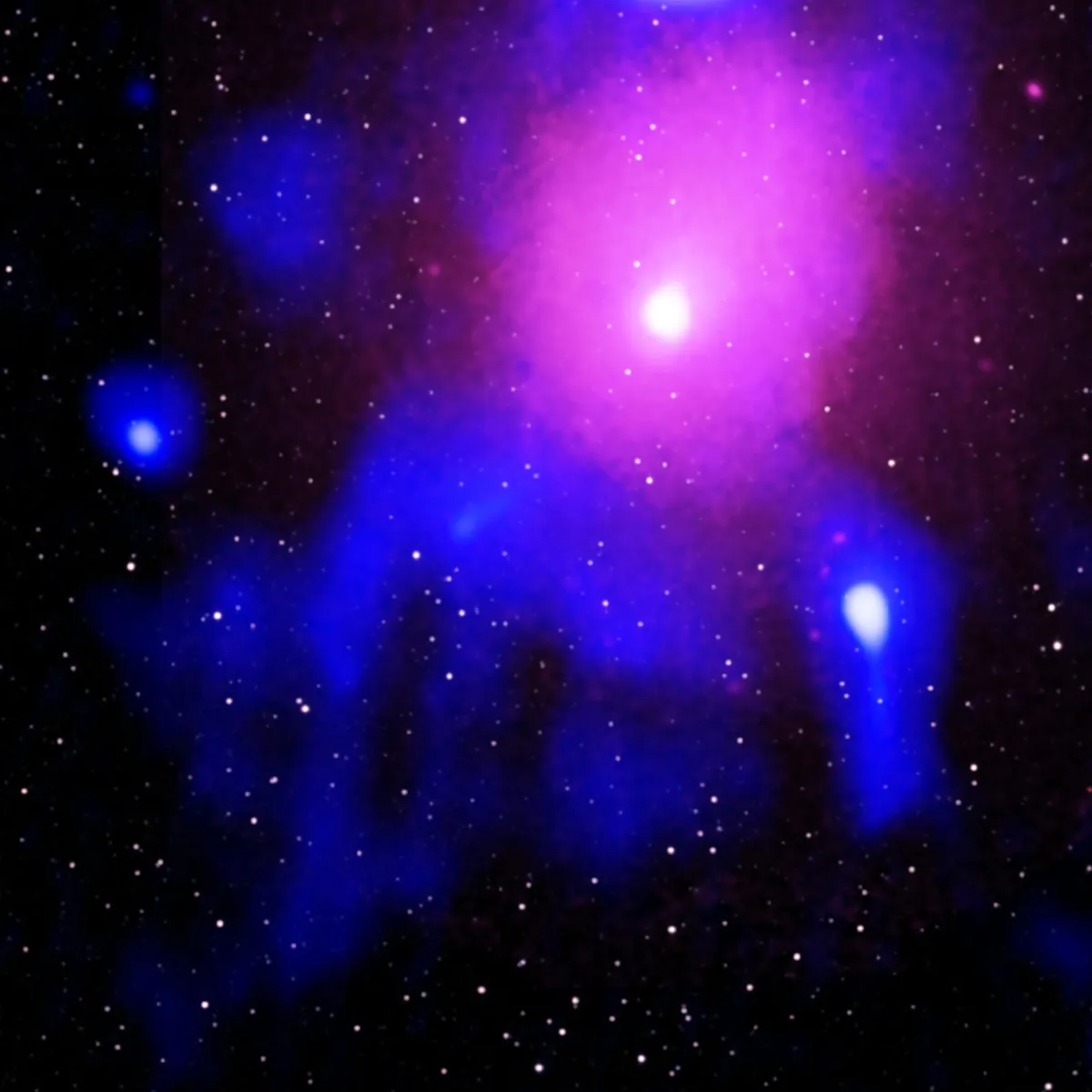
Around 390 million lightyears away a cosmic blast has occurred, generated by a supermassive black hole sitting at a galaxy’s heart.
The explosion – the biggest ever recorded – was detected in one of the members of the Ophiuchus galaxy cluster.
Clusters like these are the titans of the Universe, containing thousands of individual galaxies, dark matter and hot gas.
While black holes are commonly known as the vacuum cleaners of the Universe, they are also known to expel energy and cosmic material in violent outbursts.
This occurs when a small proportion of infalling matter is heated and blasted into space in the form of jets.
Jets have carved out a cavity in this cluster’s hot gas, punching a hole that could fit 15 Milky Way galaxies aligned in a row.
In this image, X-rays given off by the hot gas are seen in pink, radio data is blue and infrared is white. The galaxy in question is located within the white dot region surrounded by pink.
At the 7–8 o’clock position, the line between pink and blue shows the edge of the cavity, which has been filled with radio emission from electrons travelling at almost the speed of light.
Find out how this discovery was made in our interview with one of the key scientists: how astronomers discovered the biggest explosion in the Universe.
Image stats
Release date 27 February 2020
Observatories Chandra X-ray Observatory, XMM-NEWTON Space Telescope, Giant Metrewave Radio Telescope, Two Micron All-Sky Survey
Image creditX-ray: Chandra: NASA/CXC/NRL/S. Giacintucci, et al/XMM-Newton: ESA/XMM-Newton; Radio: NCRA/TIFR/GMRT; Infrared: 2MASS/UMass/IPAC-Caltech/NASA/NSF
